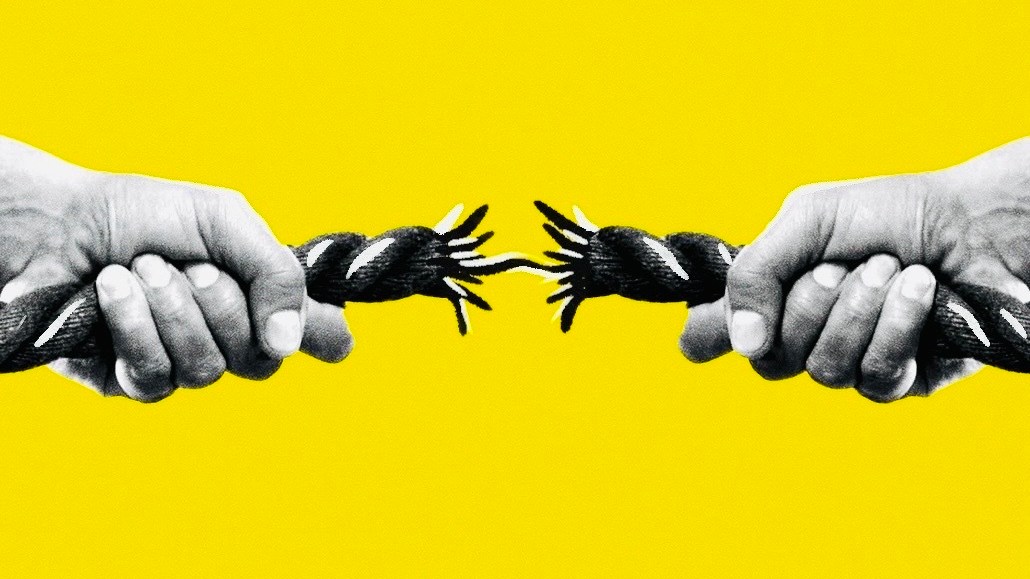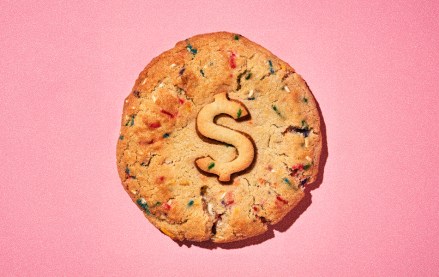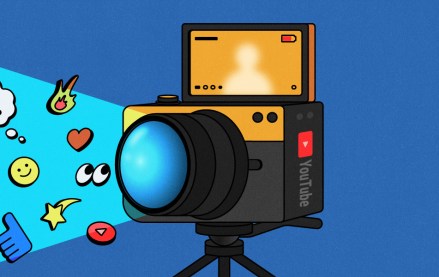Snapchat’s relationship with publishers is still pretty complicated

Snapchat’s recent staffing shake up has left publishers puzzled.
Layoffs across the mobile messaging app over the last six months have thrown a spanner into their usual way of working with them. In February alone, Snap laid off 10% (530 employees) of its overall, global workforce.
As a result, key contacts at the platform have gone silent or become slower to respond to publishers, and replacements haven’t provided much clarity — yet. Add swirling rumors to the mix about what’s going on at Snap HQ, and it’s no surprise publishers are feeling a bit adrift, as six publishers told Digiday.
“We did lose our publishing partner manager,” revealed a U.S. publishing executive, speaking candidly with Digiday under the condition of anonymity about the most recent layoffs. “We reached out to her proactively because we did also see the news about the layoffs, and she was no longer there.”
Since then, this exec has been contacted by someone else from Snapchat. However, they don’t hold much hope it will amount to much. Their relationships with Snap have always been a bit rocky — Snap partnership managers handle multiple accounts. Now, with added responsibilities and accounts from departed colleagues, it’s become even more challenging to talk to a Snap rep.
The same could be said for other platforms too. Over the last year or so both Meta and X have moved away from news, putting publishers that relied on them for traffic (and subsequently ad revenue) in a tight spot. Snapchat’s latest moves have compounded those tensions.
“Overall I think to expect the level of individual attention that you [publishers] got in the absolute heyday for all these platforms is probably naive,” added a second U.S. publishing exec. “[Nowadays] There’s less proactive programs for publishers. It does feel like a lot more stuff is built for the creator economy, for creators.”
It feels this way because platforms like Snapchat are indeed channeling significant resources into their creator businesses while the publisher side appears to quieten down. Creators have replaced publishers as one of the main ways these platforms aggregate content that commands attention. This happened slowly then suddenly as evidenced by the consternation of publishers.
Previously, they felt valued as they were encouraged to post on Snapchat’s Discover feed, the platform’s news feed if you will, with content typically from brands and publishers with promises from Snap that doing so would get their content in front of wider audiences. But now, Snapchat is pushing them toward Spotlight, its TikTok clone, as it chases the popularity of short-form videos aimed at creators. As a result, publishers feel sidelined, they told Digiday, as if they’re being forced into a space that wasn’t necessarily built for them in the first place.
The more this has happened, the more unsure some publishers have felt about where they stand with the mobile messaging app, according to sentiments shared with Digiday from publishers in the U.S., and across Europe.
And while not all execs work directly with publishers, there’s been significant turnover at the top of the business.
Ed Couchman was regional general manager of DACH, Netherlands, Nordics and U.K. at Snap, but left in January 2023. His U.K. replacement, Bridget Lea, currently the app’s U.K. general manager, wasn’t hired until January 2024. And most recently in March, Snap’s head of programming and media partnerships for EMEA and APAC, Suzy Cox, confirmed she was laid off on LinkedIn, amid rumors that more cuts were coming.
“We are getting some responses from [Snap’s U.K. head of partnerships] Lucy [Luke], following the announcement of Suzy [Cox] leaving,” said one U.K.-based publisher exec. “But the team finds it easier to deal with the AI/support agents to problem solve. Lots still unanswered though.”
More often than not, those unanswered questions tend to revolve around that perennial issue all ad execs seem to have to endure when working with platforms: finding out why various aspects of the app have changed or why certain information is no longer available.
“Inconsistent” is a word publishers think of when it comes to Snapchat now.
“Currently, revenue from Snap[chat] fluctuates month to month, making it difficult for our teams to plan and model off of,” added the second U.S. publishing exec.
Snapchat offerings to publishers
One example, which has been part of what is supposedly dubbed internally as Project Unity since about 2022, was reducing the ability for publishers to get granular information about how their content is performing, by simplifying the back end of the app. Previously publishers could find out which geographies their content performs best in, how the revenue differentiates between the U.S., the U.K., France and Germany and so on. For about the last six months, they’ve not been able to.
“If you [publishers] haven’t invested in building your own tech stack, you don’t get that information anymore,” said a U.K. publishing exec. “Previously publishers got far more information on Snapchat than they would from Meta. But nowadays, it’s not that Meta has added anything extra, it’s just that Snapchat has taken it away.”
Another example is when Snapchat removed its Comscore integration for publishers this year, a frustration that has been felt across both sides of the Atlantic.
“This was a huge blow to publishers who were counting on being able to holistically quantify their audiences,” said the first U.S. publishing exec.
Despite these concerns, Snapchat has said it still values publishers — all 900 plus of them across 20 countries, Luke noted on a podcast with The Media Leader last month. Or rather it values those, and the teams behind them, that behave more like creators or Snap Stars.
“We remain committed to building strong relationships with our publishing partners and creating opportunities to build their business, monetize their content, and grow their audience on Snapchat,” said a Snapchat spokesperson in a prepared statement that did not address multiple points from Digiday.
Publishers said comments like this would go down easier if the app provided explanations for its actions or at least listened and responded to their concerns. The lack of such communication makes them feel like another casualty of platforms deprioritizing publishers, as noted by several publishing execs to Digiday over the past year.
Left to speculate, Snapchat hasn’t really given them much choice but to come to their own conclusions. The most popular being the idea that Snap is consolidating management of these relationships over to the U.S.
“My gut is that they are either trying to move it all to management in the U.S. or try to adopt a similar approach to TikTok and Meta,” said the U.K.-based publishing exec. “Snap always had more intense platform partnership management than any other platform. As they increase the level of content via creators, that becomes unmanageable.”
Still, not every publisher feels discarded by Snapchat.
Joe Caporoso, president of Team Whistle, for example, explained that Snap remains a critical distribution partner for them and has consistently communicated over the years. In other words, it’s still profitable for the publisher to post content on the app even as others suffer referral traffic declines.
“I think they’re [Snapchat is] trying to redirect more people [publishers] from Discover into Snap Stars and some of the other products that they’re doing, so you’re seeing more and more audience probably shift over there,” he said. “We’ve been encouraged by seeing how that grows, and we’re still seeing good engagement impressions around [what we’re doing on Snap]”.
As a result of this shift, Caporoso said Team Whistle’s Q1 2024 revenue from Snapchat has been comparable this year to what it was last year, and “narrowly increased,” though he didn’t disclose specific figures.
Who publishers are reaching on Snapchat
Snapchat — which boasts an audience of 414 million daily active users, and 800 million monthly active users — keeps publishers interested in the platform.
Specifically, to reach Gen Z and young millennials, said Benjamin Cohen, chief executive of PinkNews, a publisher based in the U.K. “While like all platforms, we see fluctuations in reach and revenue, we continue to generate meaningful revenue from distributing our content on Snapchat through Snap sold programmatic fill,” he said.
It’s a similar perspective for Melissa Chapman, CEO of Jungle Creations, who said that her team has worked with the platform for many years and found it to be a viable revenue source, though didn’t disclose specifics. “The value of premium content and publishing on Snap[chat] has always felt a priority — be that from creators or publishers,” Chapman added.
Regardless of how they feel about Snapchat these days, publishers are coming round to the idea that things are going to change — for better or worse.
“It used to feel easier to get answers to questions there [from Snapchat],” said the U.K. exec. “You’d literally get them from [Snap’s CEO] Evan [Spiegel]. But I don’t think it’s that they’re being more secretive. I think it’s more the case that they don’t have the answers,” they added.
More in Marketing

Marketing Briefing: Marketers appreciate the ‘legroom’ for tests with Google’s latest cookie delay
The proverbial can had already been kicked down the road a few times and doing so again allows more time to potentially minimize the impact on advertisers.

Digiday+ Research deep dive: Brand marketers grow their YouTube spending while agency marketers cut back
When it comes to social media marketing, YouTube doesn’t always get as much attention as its Meta, TikTok and X counterparts. But brands are actually increasing their marketing spend on the platform. It turns out it’s a different story for agencies, though.

Amazon, Apple, Oracle rumored to be potential TikTok buyers if ByteDance is forced to sell
The rumor mill is in full force despite ByteDance stating it would rather shut down the app in the U.S. than sell it.








